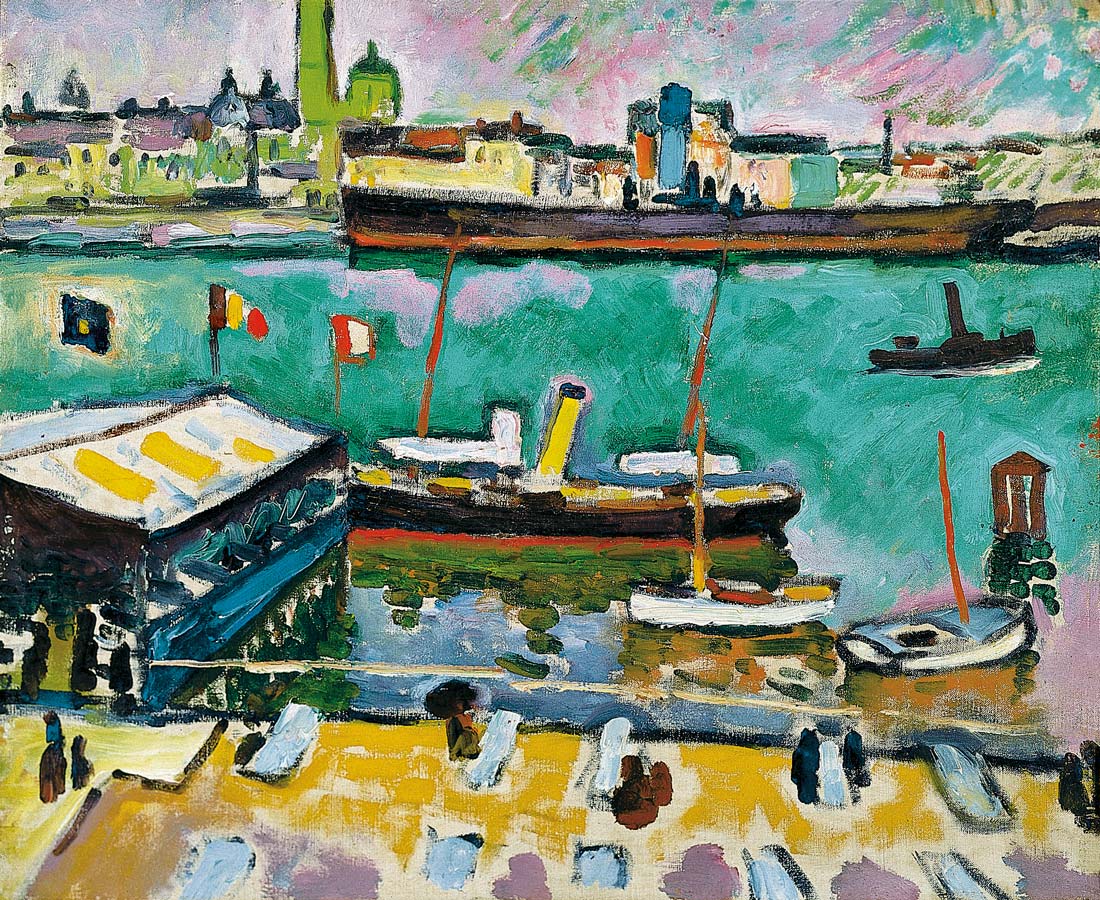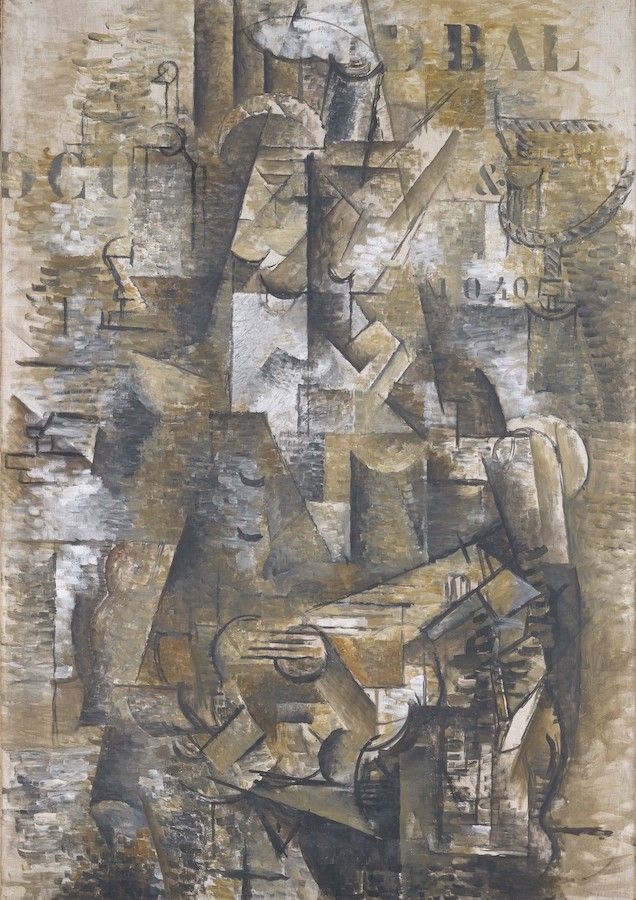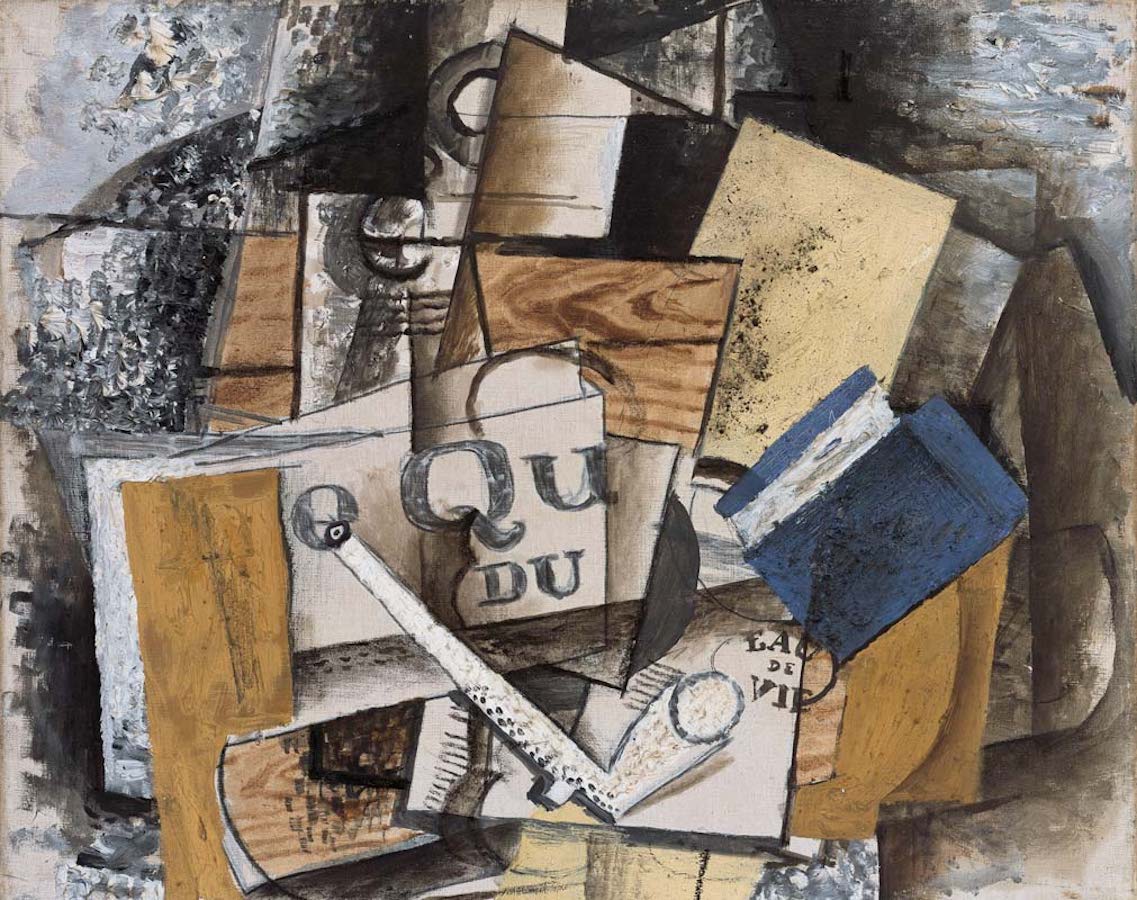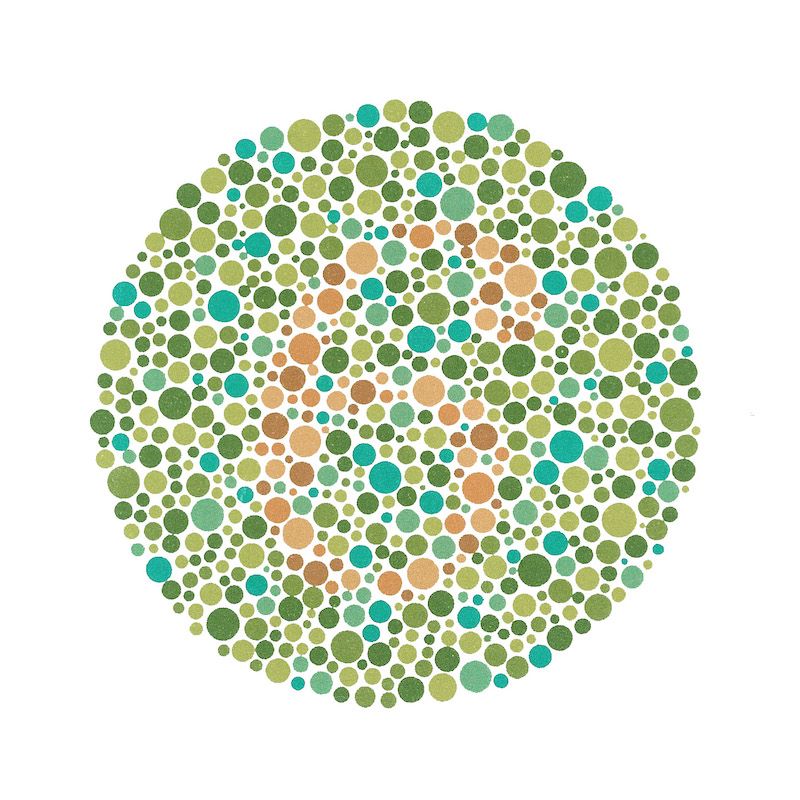Of all the various -isms Cubism is one of my favourites. And yet, I have never really warmed to Georges Braque (1882-1963), even though he played a major role in the development of Cubism. After visiting the excellent exhibition “Georges Braque. Inventor of Cubism” at the Kunstsammlung Nordrhein-Westfalen in Düsseldorf I think I finally understand why.
The exhibition focuses on the years between 1906 and 1914. During this period Georges Braque and his friend Pablo Picasso revolutionized painting by fragmenting the pictorial space and the forms of objects. In the course of development, they would abandon the idea of a fixed viewer’s vantage point and a uniform space and source of light. The exhibition shows how Braque’s style changed from fauvism to what is now referred to as proto-cubism, analytical cubism and synthetic cubism.
In 1908 Braque abandoned the bright colours of Fauvism and changed his palette to muted earth tones like grey, brown, green and ochre as can be seen in "Trees at L’Estaque" (1908). This is precisely the spectrum for which I’m colour blind. It’s not that I don’t see any colours, I have trouble distinguishing between certain colours and I have difficulty naming them. One moment I may label a colour brown and the next moment I may label the same patch of colour green. Because I see the colours differently I also see the composition differently. And that is probably why I never quite liked Braque as much as I like Picasso.
Somewhere around 1912 and 1913 Braque expanded his palette again. His paintings become more colourful and foreground and background are more clearly defined. It is no coincidence that the final paintings in the exhibition are among my favourites. Around this time Braque also began to use thick layers of paint with sand mixed in, which gave his paintings a distinct texture while also enhancing the spatial composition. The relief of layers of paint makes the representational motifs appear as contoured forms, as in "Nature morte à la pipe (Le Quotidien du Midi)" (1914), but for that you would need to see the actual painting, not a reproduction.



Georges Braque: Le Port d’Anvers, 1906 (left); Le Portugais, 1911-12 (middle); Nature morte à la pipe (Le Quotidien du Midi), 1914 (right)
In 1912 Braque found some imitation wood-grain wallpaper in a paint store, which he liked so much that he cut out some pieces and glued them onto one of his charcoal drawings. Thus the “papier collé” was born. He went on to create many more, using newspaper clippings, sheet music and pages from program leaflets, which he arranged into complex compositions while adding drawn elements. Shortly afterwards Picasso would adopt the same technique and develop it further. Because of their fragility the “papiers collés” are rarely exhibited and I was happy to see some.
"Georges Braque. Inventor of Cubism" is an exemplary exhibition. It shows how Braque developed cubism, step by step, and how he continued experimenting with new techniques. But to really appreciate his work you probably should not be colour blind, like me.
Georges Braque. Inventor of Cubism is at the Kunstsammlung Nordrhein-Westfalen K20, Düsseldorf until 23 January 2022.
